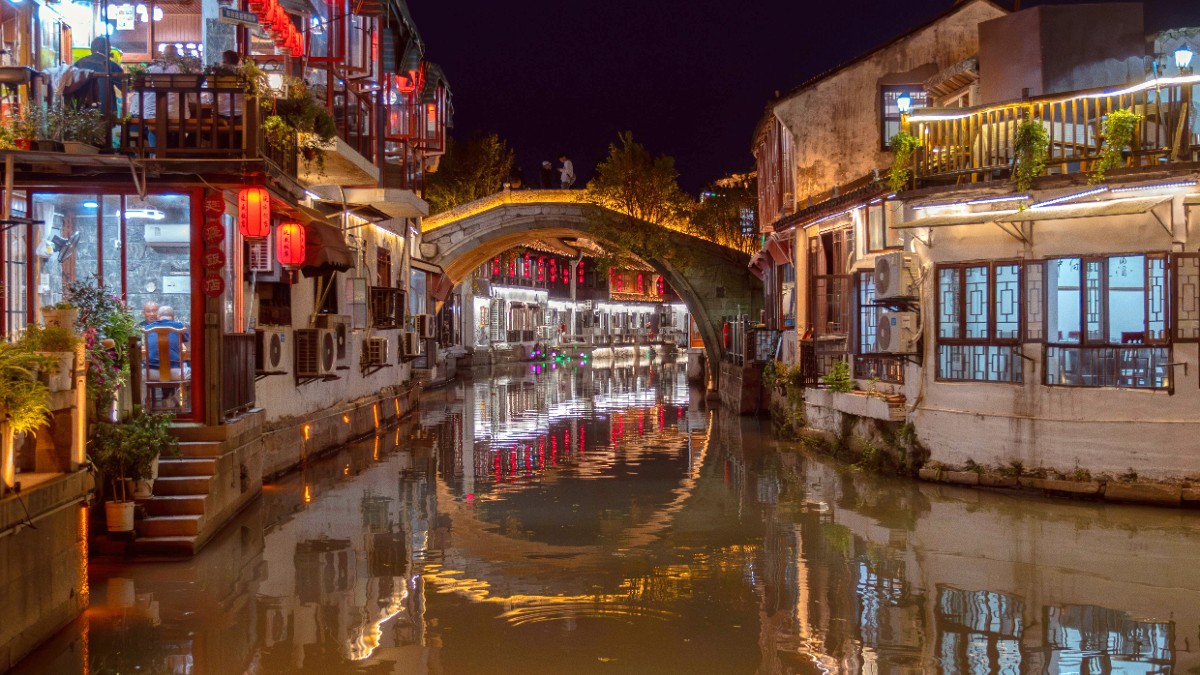
Jiangsu, China
Suzhou Metro: The metro stands as a modern, efficient, and expanding subway system. Several operational lines (Line 1, 2, 3, 4, 5, 6, 7, 8, 11) cover major tourist areas, commercial centers, and residential districts. Line 1 runs east-west through the city center, connecting many major attractions like the Humble Administrator's Garden and Guanqian Street. Line 4 links Suzhou Railway Station with the southern parts of the city. Notably, Line 11 connects to Shanghai's Metro Line 11, extending direct inter-city metro travel.
Buses: Suzhou maintains an extensive bus network. Buses cover areas not reached by the metro and extend a more comprehensive service for local neighborhoods. While slower due to traffic, they present a good way to see local life.
Metro: Single-ride tickets are available from vending machines. Pay with cash (less common) or, more conveniently, with WeChat Pay or Alipay by scanning a QR code. The Suzhou Public Transportation Card (市民卡 - Shìmínkǎ) is a rechargeable option. Mobile payment is the most common method.
Metro Fares: Typically range from ¥2-¥8 depending on distance. Bus Fares: Most bus routes have a flat fare (usually ¥1 or ¥2). Some longer routes might be distance-based. Pay with cash (exact change is recommended) or by tapping your public transport card. Mobile payments are increasingly available on buses.
Suzhou Metro stations generally feature accessibility, with elevators and escalators, making them suitable for travelers with luggage or mobility needs. Buses may present less accessibility, with steps and limited space for wheelchairs. Older parts of the city with narrow alleys and uneven surfaces also pose challenges for mobility. A private car service may serve as a more flexible and accommodating transport option if needed.
1, 2, 3, 4, 5, 6, 7, 8, 11 (operational)
¥2-¥8 (Metro), ¥1-¥2 (Bus)
7:30-9:00 AM, 5:00-7:00 PM
WeChat Pay, Alipay
Taxis and ride-sharing apps present convenient ways to travel in Suzhou, especially for direct routes or when carrying luggage.
WeChat Pay and Alipay are the preferred payment methods for both taxis and Didi, streamlining transactions.
While cash is accepted, it is less common for taxi drivers and may not be preferred for Didi payments.
Didi shows the fare upfront, providing clarity and preventing potential disputes over pricing.
While public transport and ride-sharing are common, other rental options exist for specific needs in Suzhou.
Drive on the right side of the road. Traffic signs are in Chinese. Foreign visitors generally cannot legally drive without a Chinese driving license.
Compliance with local regulations is necessary.
Major roads maintain good quality. However, traffic congestion presents a prominent challenge, especially during peak hours and public holidays.
Anticipate traffic delays.
Finding and paying for parking may present challenges and be expensive in central areas. Public parking garages are available, but they fill quickly.
Parking can be difficult.
Beyond standard modes, Suzhou presents unique transportation experiences that form part of its appeal.
Convenient for covering many attractions efficiently. Check routes at tourist info points.
An iconic experience for scenic tours on the city's waterways. Available in historic districts.
Newer infrastructure like the Metro generally features accessibility. Older areas may present challenges due to uneven paths and steps.
Suzhou's diverse transportation options mean you can tailor your movements to your pace and interests.
From efficient metro lines to scenic canal boats, each mode presents a distinct view of the city. Planning your routes ahead maximizes your exploration time.